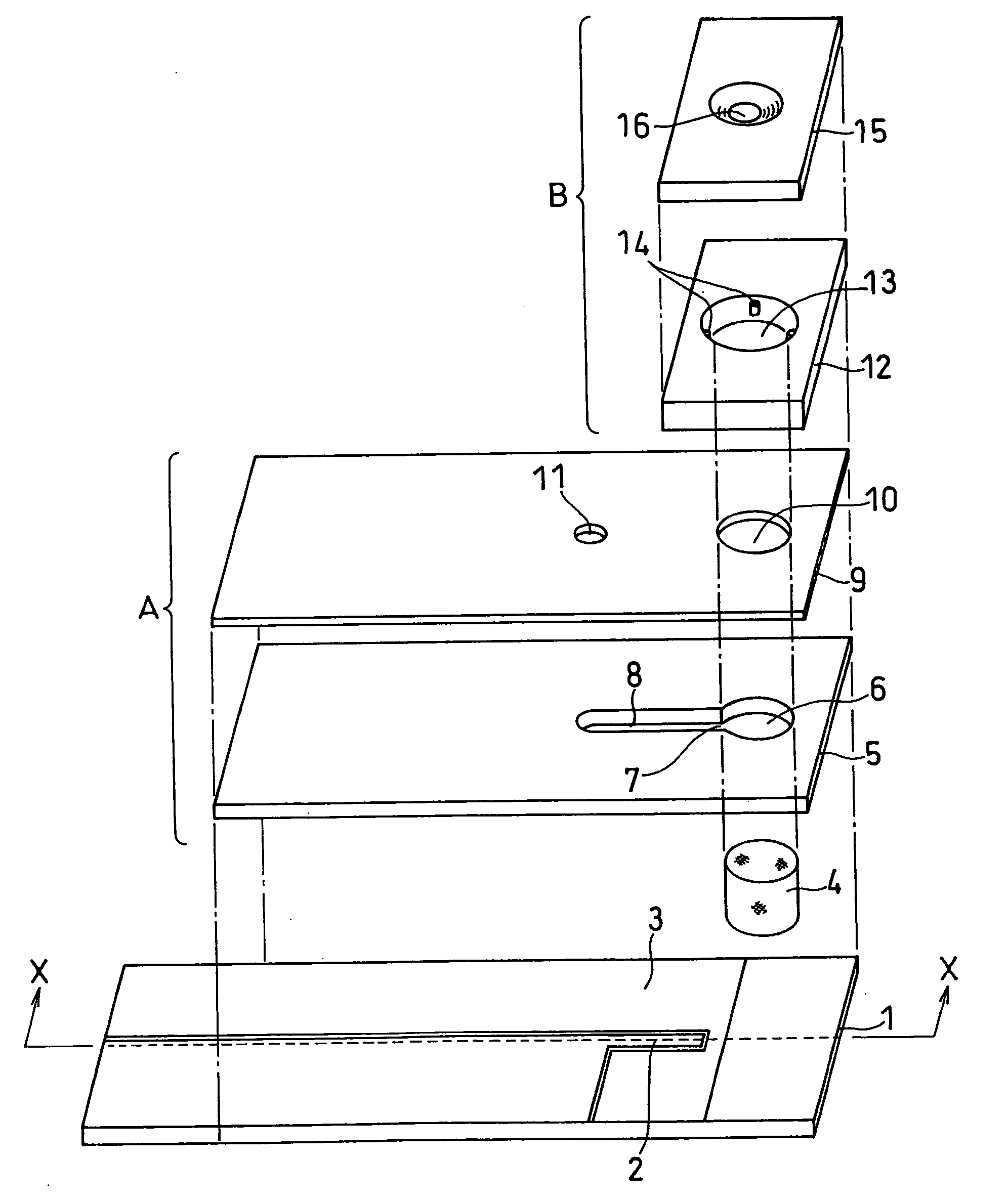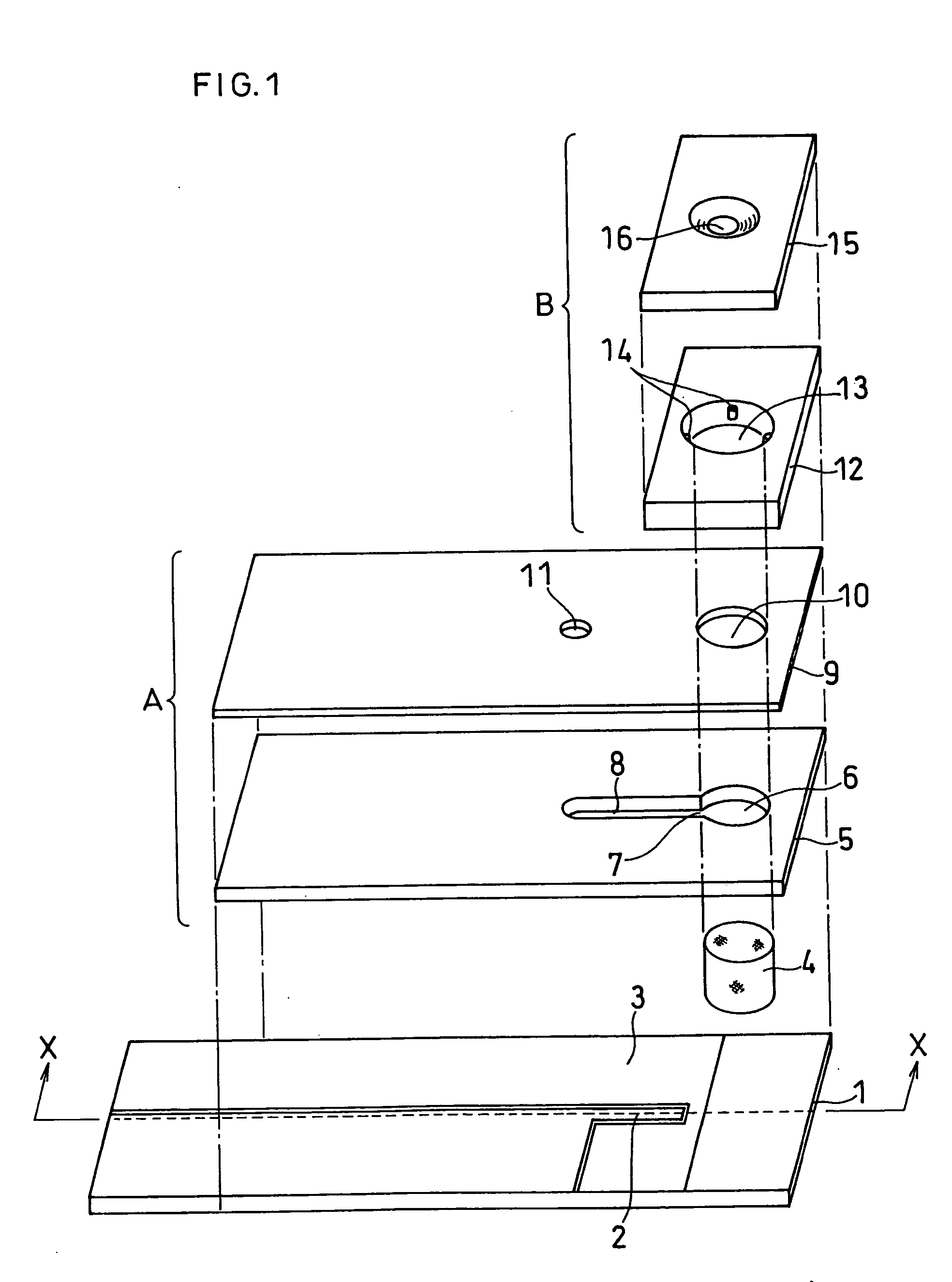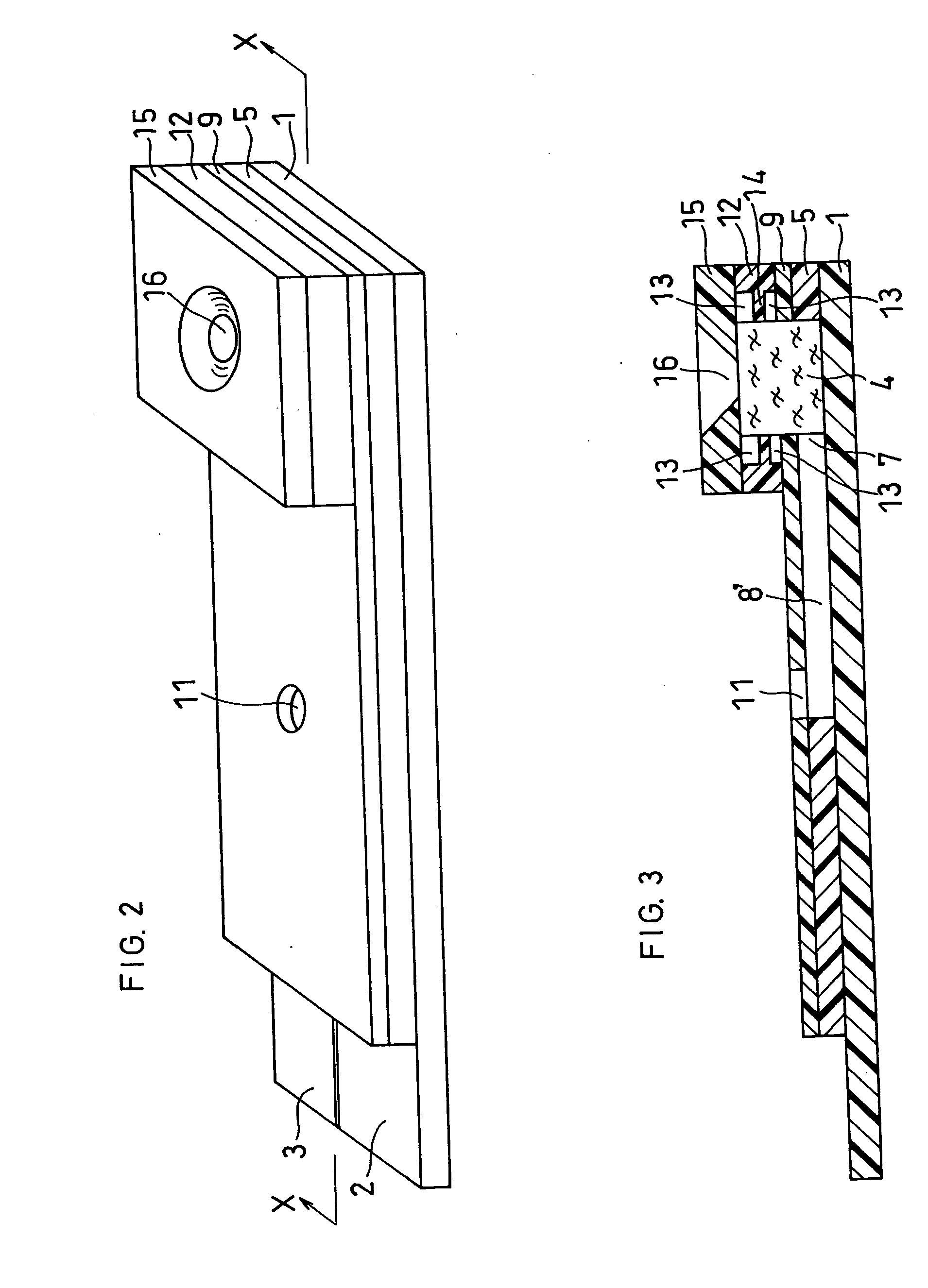Biosensor
a biosensor and sensor technology, applied in the field of biosensors, can solve the problems of destroying hemocytes captured in the filter, and unable to measure whole blood itsel
- Summary
- Abstract
- Description
- Claims
- Application Information
AI Technical Summary
Benefits of technology
Problems solved by technology
Method used
Image
Examples
embodiment 1
[0101] A biosensor in accordance with Embodiment 1 of the present invention comprises: an insulating base plate; an electrode system having a working electrode and a counter electrode which are provided on the base plate; a reaction layer including at least oxidoreductase and an electron mediator; a sample solution supply pathway which includes the electrode system and the reaction layer and has an air aperture on the end side; a sample solution supply part for introducing a sample solution; and a first filter which is disposed between the sample solution supply pathway and the sample solution supply part for filtering the sample solution, where a filtrate filtered with the first filter is absorbed into the sample solution supply pathway due to capillary action. This biosensor is characterized in that the first filter does not intrude into the sample solution supply pathway, the direction in which the sample solution passes through the first filter is vertical, and further, the dire...
embodiment 2
[0113]FIG. 5 is an exploded perspective view of a biosensor in accordance with Embodiment 2 obtained by further improving the biosensor in accordance with Embodiment 1 above. As shown in FIG. 5, the biosensor in accordance with the present invention has an insulating base plate 101 made of an insulating resin such as polyethylene terephthalate. In FIG. 5, on the left upper face of the base plate 101, a palladium portion is formed by means of sputtering, vapor deposition or the like, followed by laser trimming, to form an electrode system including a working electrode 102 and a counter electrode 103. The area of the electrode is determined corresponding to a width of a slit 108 formed on a spacer 105, as later described.
[0114] In the spacer 105 to be combined with the base plate 101 formed are the slit 108 for constituting the sample solution supply pathway, in the biosensor obtained after being assembled, an inlet 107 of the slit 108 and an aperture 106 which has a smaller diameter...
embodiment 3
[0135] A biosensor in accordance with Embodiment 3 of the present invention comprises: an insulating base plate; an electrode system having a measuring electrode and a counter electrode which are provided on the base plate; a reaction layer including at least oxidoreductase and an electron mediator; a sample solution supply pathway which includes the reaction layer in contact with the base plate and has an air aperture at the end; a sample solution dropping part for introducing a sample solution; and a first filter which is disposed between the sample solution supply pathway and the sample solution dropping part, without intruding into the sample solution supply pathway, and filters the sample solution in the vertical direction, where a filtrate is absorbed into the sample solution supply pathway due to capillary action and passes laterally from the inlet of the sample solution supply pathway toward the air aperture thereof, characterized in that the first filter is constituted by a...
PUM
| Property | Measurement | Unit |
|---|---|---|
| width | aaaaa | aaaaa |
| width | aaaaa | aaaaa |
| thickness | aaaaa | aaaaa |
Abstract
Description
Claims
Application Information
 Login to View More
Login to View More - R&D
- Intellectual Property
- Life Sciences
- Materials
- Tech Scout
- Unparalleled Data Quality
- Higher Quality Content
- 60% Fewer Hallucinations
Browse by: Latest US Patents, China's latest patents, Technical Efficacy Thesaurus, Application Domain, Technology Topic, Popular Technical Reports.
© 2025 PatSnap. All rights reserved.Legal|Privacy policy|Modern Slavery Act Transparency Statement|Sitemap|About US| Contact US: help@patsnap.com



